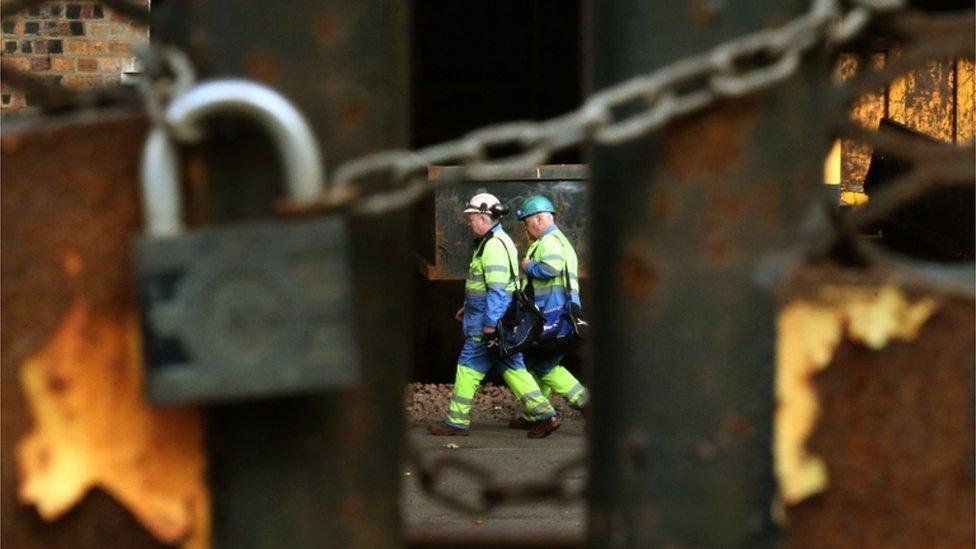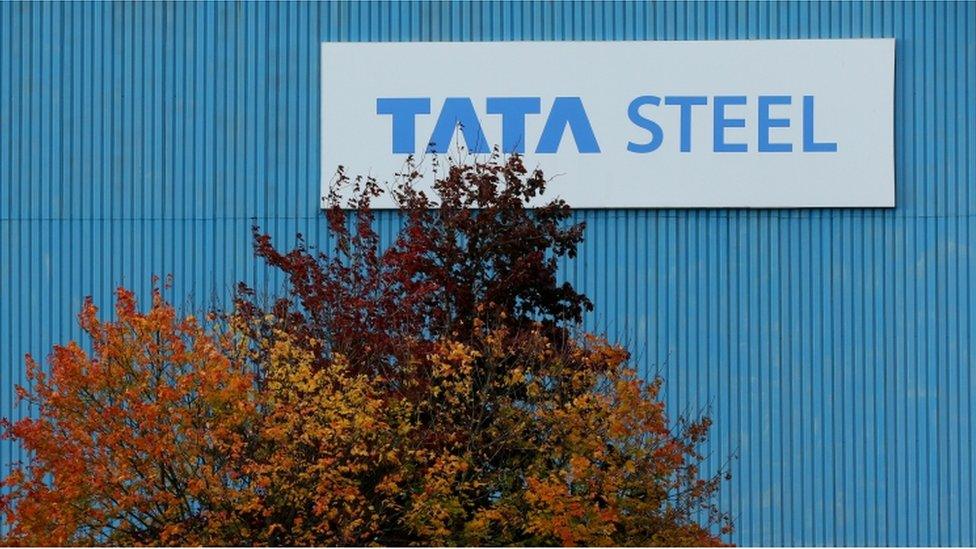May the task force be with you
- Published

When the going gets tough, it's time for a task force. But for what?
Such a force meets for the first time on Thursday. Its task is to save the Scottish steel industry. Or is it?
Perhaps, instead, this is the forum in which to address the possibility that there is no way of keeping the slabs rolling at Dalzell and Clydebridge, and that it is proving very hard to find a buyer.
In that case, it is also the place to build a consensus around how to move on.
So the expectations may vary, but at least a task force gets the key players round one table. Once there, it's much harder for political opponents to grandstand.
It's also a focus where pressure can be applied to the firm doing the plant closure, to come up with cash for training a workforce forced into transition.
Indignation
And it allows for a single voice, from the government minister who chairs it, to pronounce at the meeting's end that Something Must Be Done.
It's a fair bet that pronouncement will be for an end to Chinese dumping of subsidised steel in European markets and faster action from Westminster/Brussels to reduce energy bills for intensive users.
There is already indignation that the unions and the Scottish government are being left out of other task forces.
Going further, with a call for a change in monetary policy to weaken sterling, looks too politically problematic.
'Largely useless'
One veteran of many of many task force meetings says: "They're largely useless.
"There's just enough in there that make them worthwhile. And it would be very difficult not to participate".

He points out that any deals to sell a plant or assets to a new owner are inevitably done away from the task force.
"The danger is that setting up a task force gets people's expectations too high," he says. "People think it sounds hopeful."
The long grass
However, if you were losing your job with steel plant closures, or mothballing, you would want nothing less than a task force.
That's why they have become a mainstay of governing. Although the words 'task force' suggest some shared purpose, pulling together for the same outcome, the group may be a way of resolving different tasks, reconciling forces at odds with each other.
They can be multi-purpose vehicles for government to look busy, to build consensus, to kick issues into the long grass ("the task force will report after the election") or, conversely, to maintain momentum.
On the latter, after the election in May, David Cameron set up 10 task forces to chase progress in priority areas, including troubled families, exports, digital infrastructure, social care and foreign fighters returning from Syria and Iraq.
They could as easily have been called "ministerial committees", but the Prime Minister already had some of those, and they don't sound so busy, dynamic or, indeed, forceful.
Fast response team
For plant closures, the Scottish government has a permanent task force - a fast response team geared up to move in with job and training advice, and to broker arrangements with the departing management.
This is known as PACE - Partnership Action for Continuous Employment.
The partners include the Scottish government, Skills Development Scotland, Business Gateway (which helps with start-ups) and Jobcentre Plus.
The original idea of PACE, which was set up under the Labour-LibDem coalition, was to act as an intelligence network, sniffing out plants that were about to shed workers.

That way, the fast response PACE team could try to avert closure, or be poised for it happening, and ministers could look like they had their fingers on the corporate pulse.
It hasn't worked out that way. It is unusual for employers to share information about redundancies or closures until very close to the announcement to those affected.
As a courtesy, Government is given a little advance warning. But when Diageo failed to tell Alex Salmond about 700 job losses from the Johnnie Walker bottling plant in Kilmarnock five years ago, things turned odd.
The First Minister took to marching with the townsfolk to protest, saying that he could find ways to keep the plant open and viable. Its owner - the world's largest distiller - had said it could not. The plant duly closed. It was not Mr Salmond's finest hour.
Rocky times
A couple of years back, I used the Freedom of Information Act to seek out evidence of how effective these PACE teams have been.
The response showed very little evidence. I was given the number of workers contacted each year. That contact may be merely the handing out of a PACE guide.
So between 2009 and 2012 - very rocky times for the economy - there were nearly 40,000 people contacted by PACE, at 943 employers. There may be some double counting for redundancies that spanned two financial years.
But there is no accounting for what happened to the people contacted, how many retrain and where they find work, how many leave the workforce, how many become unemployed and for how long.
Nor do we know how much re-employment bang there is for the Scottish government buck.